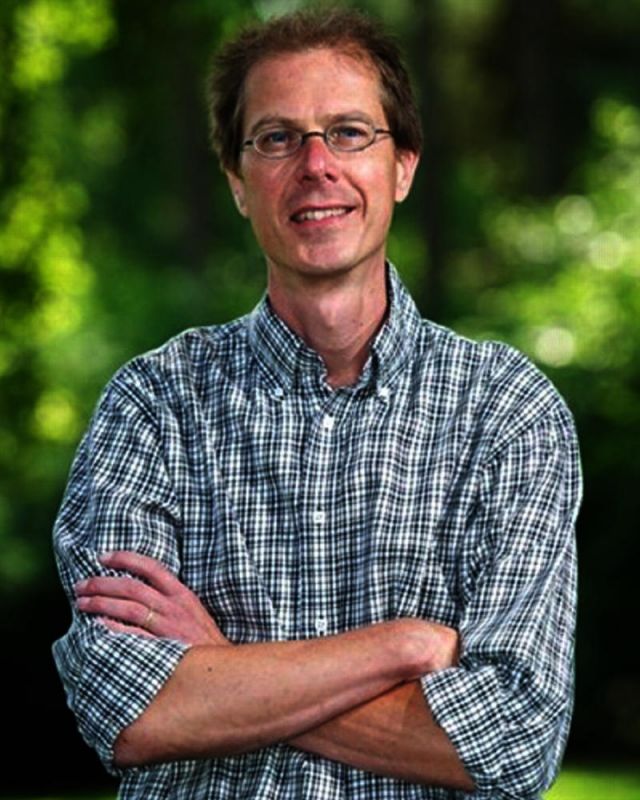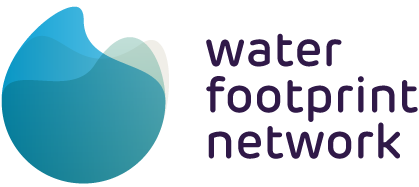In Conversation With: Prof. Arjen Hoekstra, Founder of the Water Footprint Network
Published on by Water Network Research, Official research team of The Water Network in Academic
The Water Network research team had the wonderful opportunity to interview Prof. Arjen Hoekstra - the founder of the Water Footprint Network. He is the creator of the water footprint concept. Here are the excerpts from the interview.
 Prof. Arjen Hoekstra is a Professor in Water Management at the University of Twente, the Netherlands.
Prof. Arjen Hoekstra is a Professor in Water Management at the University of Twente, the Netherlands.
He holds an MSc degree, cum laude, in Civil Engineering and a PhD degree in Policy Analysis, both from Delft University of Technology. He has a broad international network, lived in Europe, Asia and Africa and visited 55 countries.
Prof. Hoekstra has led a variety of interdisciplinary research projects and advised governments, civil society organizations, companies and multilateral institutions like UNESCO and the World Bank.
1. Can you explain the terms water footprint (WF) and virtual water?
The WF of human consumption within a certain geographic area consists of an internal WF, referring to the WF within the area itself for making products that are consumed within the area, and an external WF, referring to the WF in other areas for making products imported by and consumed within the geographic area considered.
Thus, trade in water-intensive commodities like crops results into so-called virtual water flows between exporting and importing regions. Crop trade saves water resources for an administrative region if it imports water-intensive crops instead of producing them domestically.
The WF is an indicator of freshwater appropriation, both consumptive and degradative use. We can look at the WF of a product over its full supply chain, at the WF of a producer or consumer, or at the WF within a certain river basin. In order to help professionals carry out their own assessment, the Water Footprint Network developed the Water Footprint Assessment Manual.

2. What are the different types of WF?
The consumptive WF includes a green and blue component. The green WF refers to the consumption of rainwater; the blue WF refers to the consumption of groundwater or surface water. The degradative WF, the so-called grey WF, represents the volume of water required to assimilate pollutants entering freshwater bodies.
 3. How did you come up with the idea of founding the Water Footprint Network?
3. How did you come up with the idea of founding the Water Footprint Network?
The Network was founded in 2008 because of the need for a platform for exchange.
Practitioners were very much interested in applying the concept but there was little experience.
The Network offers a bridge between researchers and practitioners, but also between different sectors, e.g. between the public and private sector and between civil society organizations and companies.
4. What are the activities of the Water Footprint Network?
Dissemination of knowledge, awareness raising, training and capacity building, promoting research, bringing together different stakeholders, offering a platform for exchange, developing practical tools, engaging in discussions about effective ways to come to better water governance, and so much more!
All activities are driven by the mission of the organization: contribute to sustainable, efficient and equitable water use worldwide.
5. You have done extensive research on calculation of WF for crops, animal products, bioenergy etc. Which of these is the most difficult to measure? How difficult is to acquire data for these calculations?
The most elaborate work was probably the calculation of the WF of different sorts of animal products worldwide. The livestock sector is so incredibly untransparent! This is a nightmare for researchers like me, but as I describe in my latest book also a major bottleneck if we want to move towards greater water sustainability in this sector.
 6. What is your message to corporates to motivate companies to calculate their WF?
6. What is your message to corporates to motivate companies to calculate their WF?
Making water use sustainable, both in the own operations and the supply chain, is a great business opportunity, because obviously only sustainable business has the future.
Water scarcity is a major challenge to business, because of the various risks involved, from the risk of physical shortages and regulatory risks to reputational risk. Frontrunners in sustainability will have a comparative advantage compared to business as usual.
7. You have developed some interesting games and tools like the River Basin Game, Fishing Game, Groundwater Game, Globalization of Water Role Play etc. Who are these games directed to and how do you measure their impact?
Everyone loves those games, from students to professionals. They offer a dynamic and interactive way of learning, better than lectures and keynote addresses! Read more about two of my games in a paper that I wrote about them or download game materials right away.
8. What are your upcoming projects at the Water Footprint Network?
My daily work is research with my team at the University of Twente in the Netherlands. The executive management of the Water Footprint Network (WFN), an independent organization, is in the hands of others. In my capacity as Chair of the Supervisory Council of WFN, however, I am responsible for the strategic direction of the Network and its long-term viable operation.
9. What is your take-home message for water practitioners around the world?
We need to formulate WF caps per river basin and make sure that governments don’t issue water use permits that, taken together, go beyond the maximum sustainable WF within a basin.
We need to formulate WF benchmarks per production process and product, based on best available technology and practice. Business needs to make sure to operate within benchmark levels.
We need to discuss what are fair WF shares per country at the international level, given that some countries have WFs per capita that are twice the world average. Countries like the US will need to reduce their WF more than others, which may also involve changing consumption patterns.
And above all : we need product transparency, because currently it’s impossible to say for products on the shelves whether they are sustainable or not.
Read More Interviews from the 'In Conversation With' Series
by The Water Network
Media
Taxonomy
- Water Footprint
- Virtual Water
- Water Footprint Research
- Water Management
1 Comment
-
Revalorization of Waste waters for a Productive Organic farming on farms in Africa Sénégal Cameroun Cote d'Ivoire Burkina Burundi Bénin Mali RCA Niger Mauritanie Congo Conakry Guinée RDC Sierra Léone Gabon Mayotte Inde Monténégro Kenya Ouganda etc
The Biological Cleansing (A.B) with its process “Pit Biological" lyseconcept is a revolution in the approach and the treatment of domestic waste waters.
It does not use any filtering device, it does not produce pas de residues of muds and the water of rejection at exit is used for immediate watering of the vegetable garden
It is a total and final biological concept biotechnological economic ecological.
Its performance épuratoire at exit of the process of 90% is supplemented by avegetalized discharge system which suits him to purify the ground of diffuse pollution carrying the whole with a performance of purification to more than 98%.
The concept is declined in the form of project:
- Individual cleansing of habitat
It CEBRE information system strategic plan of Biological Cleansing of urban area. it removes the sewage treatment plant and the infrastructure of the collecting system of the traditional collective cleansing.
It PORJECT waste waters for a farming
It Recycling project of water Banks food for a honorary reintegration in the work world
It Recycling project of water vegetalized Biodiversity Pushes back the flood and fights against the erosion of the grounds
The A.B has a teaching action of safeguarding of the environment
E-mail: lyseconcept@gmail.com
http://www.viadeo.com/invitation/jean-marius.d-alexandris
https://www.linkedin.com/profile/view?id=76857248&trk=nav_responsive_tab_profile,
http://www.creabpa.fr
http://www.lyseconcept.fr
http://www.interet-general.info/spip.php?article19572